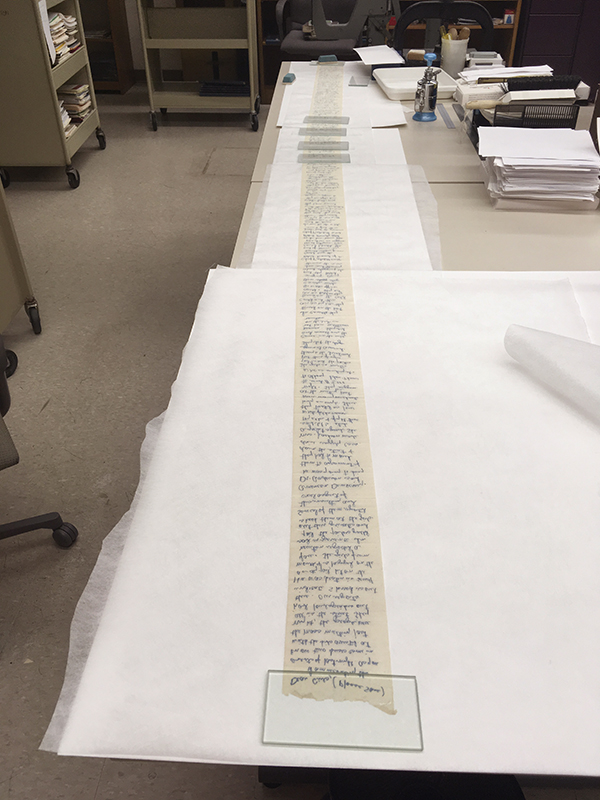Similar to the way museums are required to preserve works of art and sculpture, libraries are facing increasing challenges with physical collection media. Despite the best preventive storage practices, paper deteriorates, photographs fade, and audio and visual media degrade and lose fidelity over time. Like museums, libraries are stewards of information as well as hubs for learning and sharing this information.

Prior to digitization: The flattening of notes written on toilet paper between jailed civil rights workers, 1961. Photo courtesy Emory Preservation Department.
For this reason, library preservation programs across the world have been steadily growing. The ability to physically and digitally preserve degrading media helps to ensure access and viability to the media for generations. Creating digital surrogates of physical media provides a safe way for patrons and researchers to interact with collection items and opens access to a much wider audience of users.
Preserving library collections can be a complex endeavor. Because collections contain a variety of media and items in various states of stability or degradation, having an established digitization process in place is as important as collaborating with library staff and collection managers. Through collegial planning, preservation departments can develop best practices and guidelines that consider all library stakeholders. Considering existing workflow models from other library areas and applying them to preservation processes is a fantastic way to implement successful workflows without reinventing the wheel.
Considering factors such as program expenses, staffing costs, audience engagement, and creating sustainable returns on investments are crucial to the development of a viable digitization program. At Emory Libraries, digitization and preservation are included in the library budget. To address cost and budgetary considerations for all sizes of digitization projects, adequate funding is allocated.

Digitizing the fragile Telugu manuscript (ca. 1700) was tricky; it is composed of a series of bound, dried, palm leaves each inscribed with text that was etched into the surface of the leaves. https://bit.ly/TeluguManuscript. Photo courtesy Emory Preservation Department.
How do both libraries and patrons benefit from an established preservation plan?
The preservation management benefits to special collections are equally important to libraries and their patrons. Establishing a library preservation program creates sustainability for the existing physical collections. For example, the lifespan of analog media is rescued from the brink of total degradation and often extended.
Digital preservation creates a safe surrogate of collection material, and it adds the ability to share material to a wider audience of users. The impact of digitization and physical conservation efforts on patrons, researchers, staff, and the library also helps to shape collection management. With increased access to preserved digital collections, evidence of patron usage can therefore influence a library’s collection development.
For more information
Keep up with the Emory Libraries Preservation Department by following us on Instagram (@emorypreservation).
— Brian Methot, digital photography coordinator for Emory Libraries, is responsible for the archival photography and digital preservation of Emory University’s physical materials collection.
